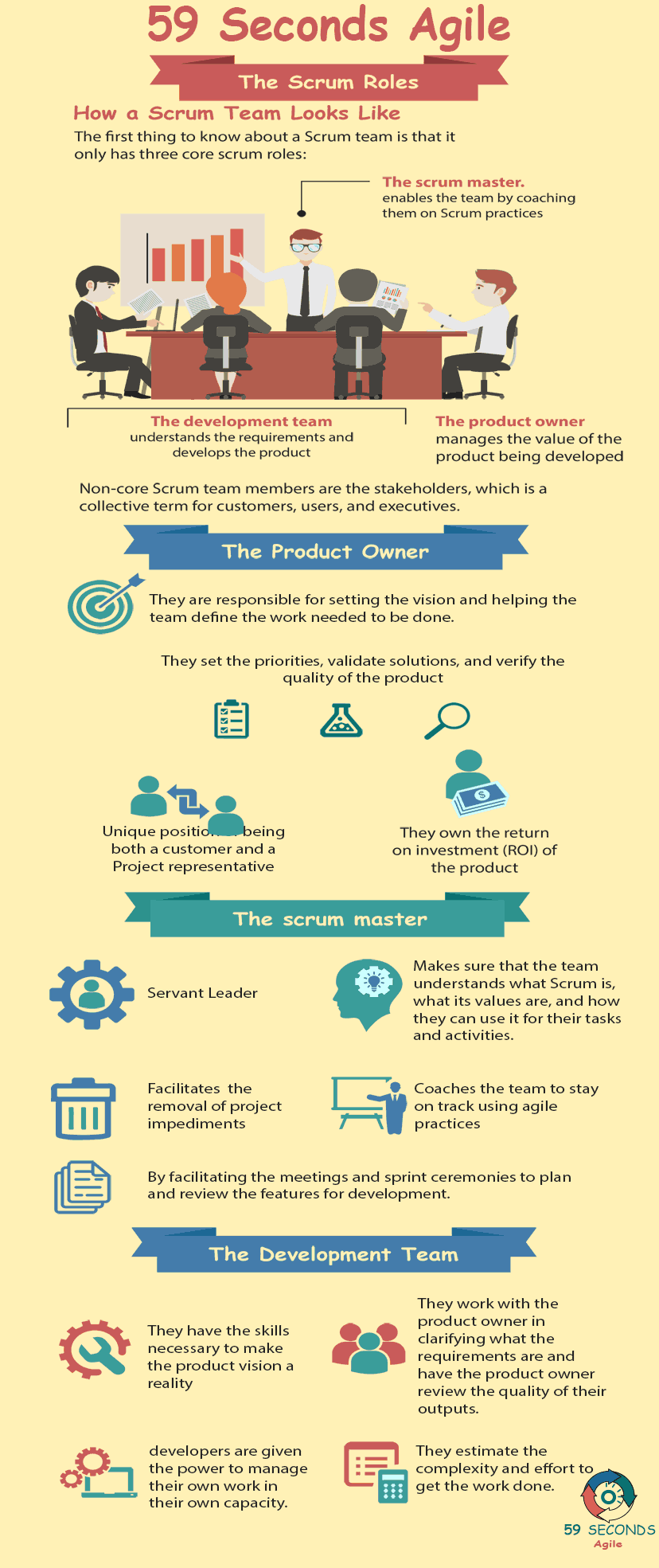This article looks to discuss the Scrum Roles and the Product Owner. The article covers how the Product Owner interacts with the other roles within the Scrum Team.

The Scrum Roles and the Product Owner – Part 2
The developers are essentially the stars in an agile project. They have the skills necessary to make the product vision a reality: business analysis, UX strategy, product design, development, data engineering, and quality assurance, to name some. They work with the product owner in clarifying what the requirements are and have the product owner review the quality of their outputs.
Scrum Roles and the Product Owner: Interacting with the Development Team
In agile practice, the developers are given the power to manage their own work in their own capacity. They estimate the complexity and effort to get the work done, and they shed light on the technical feasibility of product development. The product owner may not give direction or apply pressure on the developers’ estimates. Instead, the product owner works with the developers on what can be prioritized and what can be traded off.

Interacting with Customers and Users
The product owner acts on behalf of the product’s customers and users by representing their needs and wants. In order to understand them more, the product owner must discover what those needs and wants are by empathizing with the customers. This can be done through interviews, observations, and feedback gathering sessions with them. Some customers can also be invited to the Sprint Review to see how the product development is going along and give insights on what’s working and what can be improved with the features. It is important for the product owner to be able to use their expertise in translating the customer voices to user stories for the Scrum team to understand.
Our Favourite Agile Books
We found these books great for finding out more information on Agile Scrum:
Interacting with Executives
Aside from representing the end-users, the product owner must also represent the executives and other stakeholders. Executives influence the environment where the Scrum team works and provide the resources needed for the developers to build the product. The product owner is obligated to make the state of the project known to the stakeholders, as requested. This helps the executives plan around the organizational capabilities in making the project happen. Any limitations are communicated to the product owner, and together, they work out solutions and alternatives. The product owner must be able to balance what the customers want with what the organization has, as these have an impact on the product direction the rest of the Scrum Team is following.
As Scrum Teams are self-organizing, product owners are not there to manage the developers. They stand for the customers’ needs and wants. They also interact with everyone on the Scrum Team to clarify requirements, oversee product quality, and make the vision known to everyone.

